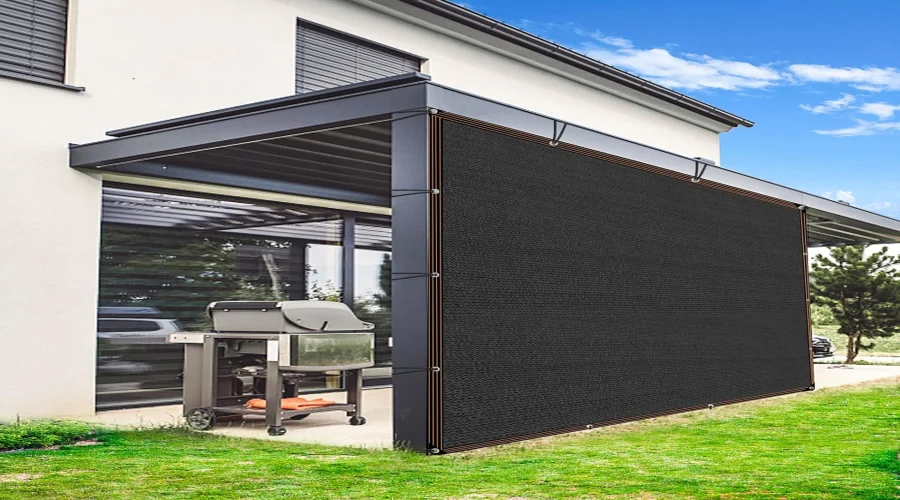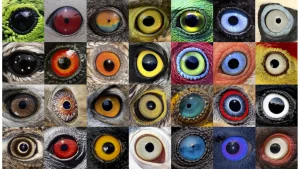What is Shade Cloth?
I’ve used shade cloth in my backyard for years, especially during hot summers when my plants needed protection. A good garden shade cloth acts like a barrier between harsh sunlight and your garden, offering strong UV protection to prevent damage. These cloths are often made from HDPE, a durable material that lasts through seasons of use. When buying shade cloths, I always check the shade factor, it tells me how much sunlight gets blocked, which is perfect for delicate greens or flowers.
One summer, I installed a shade cloth for patio gatherings, and it completely transformed the space. We got to enjoy the breeze without getting burned by the sun. Some people even go for shade sails, which are stylish and functional. They offer excellent UVR blocking, and the setup is simple, especially if you want coverage over sitting areas or garden beds.
How is Shade Cloth Made?
When I first handled a fabric shade cloth during a greenhouse install, I noticed the texture felt stronger than typical textile. That’s because quality shade cloth material is crafted using a precise process, starting with synthetic yarn. These yarns are often braided yarn, carefully aligned into a warp knit structure. This method gives the cloth its flexible yet firm feel, while keeping the tiny gaps in the mesh consistent for airflow and light control.
Modern cloth shades often use monomaterial technology, which means the entire cloth is made from a single, recyclable substance, commonly high-grade polytetrafluoroethylene. This material stands up to heat and sun for years without fading or tearing. Every roll of shade cloth material has this smart blend of design and endurance built right in.
What Materials are Used in Shade Cloth?
When choosing a shade cloth, the material really matters. From my own garden project last summer, I learned how the type of fabric shade cloth you use can affect how cool your outdoor space feels and how long your plants thrive. Many people go for HDPE, which is lightweight and breathable, perfect for reducing heat without blocking airflow. I used HDPE over my patio and it held up well through wind and rain.
Some folks prefer a heavier shade cloth material like canvas or Marine canvas when more strength is needed. These are great for areas with strong sun or bigger structures. For added durability, bonded polyester or polyester versions offer long-lasting protection without tearing.
If you need water resistance, vinyl or polyolefin options are better choices. And if you want a flexible and stretchable cover, nylon works well, though it’s best used in less windy spots. My neighbor even used outdoor fabric shade cloth made from a polyester blend, and it looked stylish while shielding her porch plants.
What are the Different Types of Shade Cloth Available?
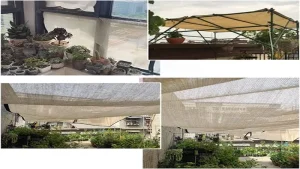
In my experience setting up outdoor spaces and greenhouses, I’ve worked with a range of Shade fabric types, and each serves a unique purpose. Aluminet Shade fabric is great for greenhouses, it reflects heat and light, keeping plants cool without blocking essential rays. For patios or play areas, I often recommend shade sail cloth or sail cloth shade, which not only provide protection but also add style. Some call it cloth sail shade, and it’s ideal for custom shade structures in sunny zones.
For professional or high-traffic needs, brands like Commercial NinetyFive, Commercial 95, and Commercial Heavy 430 deliver excellent durability. I’ve used Weathermax and Sea Hawk fabrics when working near coastal areas, they hold up well against wind and salt air. If you’re looking for flexibility, a tarp can be a temporary fix, but it lacks the performance of branded Shade fabrics. In controlled environments like greenhouses, greenhouse Shade fabrics from trusted suppliers such as Paskal offer targeted light filtration and airflow, ideal for healthy plant growth.
Why Use Shade fabric?
When I first started gardening in the summer heat, I didn’t realize how fast the sun could dry out my soil or stress my plants. I learned quickly that using a Shade fabric for gardens makes a world of difference. The right shade factor gives you control over how much light passes through, and more importantly, how much heat stays out. With an outdoor sun Shade fabric, I could feel the temperature drop under it while standing outside , and my plants showed less wilting even during peak sun hours.
It’s not just about comfort. A quality sun Shade fabric offers UV block protection, which shields delicate plants from sunburn while also helping preserve their nutrients. What I personally admire is how Shade fabric for gardening supports sustainability , it reduces water use and shields the environment from harsh heat stress. For anyone serious about gardening, this kind of protection is a quiet game-changer that keeps your greens thriving.
What Benefits Does Shade fabric Provide to Plants?
Using a Shade fabric for plants has made a noticeable difference in my backyard during hot summers. The air circulation under the cloth keeps the leaves cooler, especially in our greenhouse, where heat can quickly build up. I found that covering my vegetable garden with a vegetable garden Shade fabric not only protected the leaves from direct sunlight but also helped the soil retain more water, meaning I didn’t have to water as often. This really helped with consistency in growth.

When it came to growing tomatoes, using a Shade fabric tomatoes setup was a game-changer. I saw less sunscald and more even ripening when I placed a tomato plant Shade fabric over the bed. Many garden nurseries use similar methods, and even areas with Livestock can benefit from shaded zones to avoid overheating. It’s also great for wide garden coverage, making it easier to manage delicate plants during peak heat hours.
What are the Environmental Benefits of Using Shade fabric?
When I first started using eco-friendly Shade fabric in my garden, I noticed not only better plant growth but also how much cooler and cleaner the space felt. These materials are made from recyclable fabrics like single-polymer fibers, which are easy to reuse at their end-of-life without harming nature. A quality sustainable Shade fabric often comes with trusted sustainability certifications like Oeko-Tex® 100 and Greenguard®, which prove they are emission-free and safe for the planet. Some products are even built from recycled Shade fabric, which adds another layer of environmental responsibility by reducing waste and lowering pollution during production.
How to Choose the Right Shade fabric?
When I set up my small greenhouse, I didn’t realize how big of a difference the mesh density of the fabric would make. Choosing a custom Shade fabric helped me match the exact light needs for my plants. For delicate herbs, I used a lighter density, while vegetables needed something heavier to block more sun. The key here was understanding how UV protection and UV stability work together. These features prevent damage from harsh rays and make the cloth last longer, even after weeks of direct sun exposure.
To make installation easier, I picked a Shade fabric with grommets. It saved time and held up well against the wind. Over time, I noticed the durability, weather resistance, and flexibility of the fabric mattered just as much as the shade itself. If you’re into Shade fabric gardening, think beyond just blocking sun, you’re building a system that balances heat, moisture, and airflow to help your garden thrive.
What Shade Percentage is Ideal for Your Needs?
Choosing the right shade factor really depends on how much sunlight you want to block. For my backyard garden, I first tried a 30 Shade fabric, but the sun still felt strong during peak hours. Switching to a 50 shade cloth made a noticeable difference, it kept my tomatoes cooler and prevented wilting.
If you’re looking for more comfort, like in a sitting area, a 90% shade cloth offers serious protection. It reminded me of the dense coverage used in Commercial 95 fabrics, which are built to last in harsh sun. Also, don’t overlook the UV block, some materials like UV Shade Smart do a great job at filtering sunlight, even in 40 shade cloth setups.
How Does the Color of Shade Cloth Affect Its Functionality?
From what I’ve seen in my own garden projects, the color of a shade cloth isn’t just about how it looks , it seriously changes how it works. For example, a black shade cloth gives excellent sunlight blocking and is a favorite for protecting delicate plants. But if you’re worried about visibility or want something that looks nicer around patios or outdoor spaces, a white shade cloth often works better since it reflects more light and gives a cleaner, brighter feel. I personally like using green shade cloth when I want something that blends with nature , it provides balanced aesthetics while still helping cut down light intensity.
One thing to note is color loss over time. Not all cloths are made equal. Some lose their vibrant colour after a season or two under the sun. That’s why I always choose fade-resistant ones, especially for areas that get constant exposure. It’s not just about looking good , keeping the original color helps maintain shade effectiveness. Check out Deep Dive Picks for curated insights and expert recommendations.
What Size and Shape Should You Consider for Your Shade Cloth?
Choosing the right shade cloth isn’t just about blocking sun, it’s about matching the size, shape, and fit for your space. I once struggled with this while trying to cover my patio. A triangle shade cloth looked stylish but didn’t give full coverage where needed. That’s when I realized, understanding your beams, angles, and layout is key.

If you’re working with square spaces, a 20 by 20 shade cloth might be a better option, it stretches well between support beams, gives balanced shade, and looks clean. For something more natural, a cloth pergola shade adds texture and comfort, especially when paired with secure fittings to withstand high-tension setups.
How to Install Shade Cloth?
When I first tried putting up a DIY shade cloth for plants, I didn’t realize how important choosing the right poles for shade cloth was. You need something load-bearing, especially if you’re covering a large garden bed. I used metal fence stakes, and they worked great because they held up the tension without bending. For a cleaner look and extra strength, I added Paskal Seatbelt Webbing along the edges , this helped evenly spread the tension across the cloth.
To fasten everything securely, I used grommets on the corners and sides and secured them with clips for shade cloth. I also tested a few adhesives, but they didn’t hold as well in sun and rain. What made the biggest difference was choosing a cloth with strong UV resistance, which prevents early wear and keeps your plants protected longer. This simple setup, using solid support and proper fittings, made my garden cooler and much healthier.
What Tools and Materials Do You Need for Installation?
Installing a shade cloth in your backyard or garden was easier than I expected, especially once I had the right tools. I used strong shade cloth clips to hold the fabric securely, these were quick to snap on and surprisingly durable. To stretch it evenly, I tightened it using shade cloth clamps, which kept it from sagging, even on windy days. I paired these with sturdy shade cloth poles that I anchored into the ground using reliable fasteners and fixtures that didn’t budge even during storms. Adding accessories like edge ropes made a big difference too. I picked a tarp cover with good seam durability, and after trying a few brands, I now trust Paskal for their rugged quality.
What are the Best Practices for Hanging Shade Cloth?
When I first tried hanging shade cloth over my garden, I didn’t realize how important proper setup was. It’s tempting to just tie it off and move on, but to avoid UV degradation and maintain warp resistance, you need to create consistent tension. Loose fabric sags, flaps, and wears out faster. So, I always use strong supports like poles or cables and stretch the outdoor shade cloth snugly. And if it has sewn seams, I make sure those parts aren’t carrying too much pressure, they’re strong, but not invincible.
I’ve used different types, but my favorite is patio shade cloth with a manufacturer’s warranties. That tells me it’s built to last. You also want to hang it in a way that lets air pass through easily, which keeps the whole setup cooler and reduces wear. Over time, I learned that even a small mistake in setup can cause early fading or tearing. A little care upfront saves me money and hassle later.
How to Maintain Shade Cloth?
When I clean my shade cloth, I always check for mildew resistance first. This helps prevent mold buildup, especially after long sun exposure or rainy weather. A simple rinse sometimes works, but deeper cleaning needs specific cleaning methods. For example, using a soft brush and mild soap keeps the material intact while lifting dirt gently.
If I notice tough stains, I avoid strong bleaching agents because they damage the fabric over time. Instead, I use vinegar or baking soda as safer alternatives. Funny enough, the same gentle tricks I use to learn how do you clean cloth lamp shades and how to clean cloth lamp shades work here too , patience and gentle care make the cloth last much longer.
What Cleaning Methods are Safe for Shade Cloth?
When it comes to cleaning shade cloth, I’ve found that gentle care gives the best results while making it last longer. Always follow the washing instructions on the label, and avoid harsh chemicals. I once made the mistake of scrubbing too hard, and that weakened the fabric. Now, I lay the cloth flat and rinse it with mild soap and water. Let it soak a bit, then gently brush away dirt. This keeps the mildew resistance intact, which is super helpful in humid spots.
To keep up with regular shade cloth maintenance, check for debris and rinse it monthly. Never use strong bleach, unless it clearly says bleach resistance on the label. I personally avoid bleach entirely just to be safe. Keeping it dry after washing also helps prevent rot, which can ruin the entire fabric. These simple steps keep my shade cloth strong and looking clean all season.
What Steps Can You Take to Extend the Lifespan of Shade Cloth?
From years of using shade cloths in my backyard garden and patio, I’ve learned that if you want to extend shade cloth life, the key lies in smart care and prevention. Start by choosing a UV-stabilized cloth , these hold up much better under constant exposure to the sun. I once used a non-stabilized one, and it began to tear within a season. Protect your cloth from strong winds and heavy rain, which can reduce its tear resistance. You can do this by securing it tightly and storing it away during extreme weather.
Routine cleaning also helps maintain shade cloth durability. Dust, debris, and bird droppings can wear down its performance over time. A gentle rinse every few weeks works wonders. With these small steps, my shade cloth has lasted several years and still looks fresh. It’s all about being proactive if you want something long-lasting.
Where Can You Buy Shade Cloth?
If you’re searching for shade cloth near me, I’ve found that it’s best to begin at large, familiar places. I’ve personally picked up reliable options at lowes and home depot, they usually have multiple sizes and densities. You can also find specific brands like Paskal, known for their durability, especially across markets Australia wide.
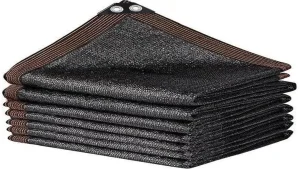
For those who prefer shopping from home, amazon and shade cloth walmart listings offer a wide range of colors and materials. If you’re someone who likes to touch and feel the material before buying, a shade cloth store locally might be your best bet, especially if you’re doing a custom garden or patio project.
What to Look for in a Quality Shade Cloth Supplier?
When I was hunting for a quality shade cloth supplier for my backyard project, I learned that certifications matter more than you’d think. Top-rated providers usually carry trusted labels like Greenguard® and Oeko-Tex® 100, which show they’re serious about safety and being health-conscious. If a company offers custom shade cloth and still meets these certification standards, that’s a green flag.
Also, I noticed how much smoother everything was when my supplier used branded accessories like Paskal, this showed they were not just cutting corners. Many suppliers toss around terms like cloth shade, but only a few actually deliver the kind of breathable, UV-resistant material that lasts through seasons. I always advise checking those quality marks first, they make all the difference.
Are There Online Options for Purchasing Shade Cloth?
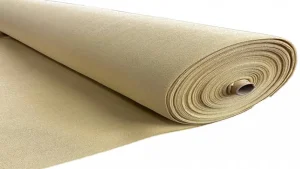
When I needed a quick fix for the garden, I looked online for a shade cloth that could handle Denver’s sun. I found that amazon shade cloth listings come in many sizes and materials, making it easy to choose one that fits just right. What stood out was the variety of ecommerce options, from premium brands like Paskal to budget-friendly picks. Shopping online gave me time to compare reviews, especially for trusted sellers.
In stores, I’ve checked shade cloth at home depot and also visited lowe’s shade cloth section. Both home depot and lowes offer solid selections, but their online catalogs are even broader than in-store. They let you filter by color, UV rating, and durability, which made my buying decision smoother. If you’re like me and prefer comparing specs from home, these digital shelves are just as helpful as a walk through the aisles.
How Do Prices Compare Between Different Retailers?
When shopping for shade cloth, I always make it a habit to compare shade cloth options across various sellers before buying. One thing that stands out is how different each product catalogue can be, not just in variety but in pricing too. Some brands offer more accessories bundled in, while others sell them separately, which changes the actual value you’re getting. I once found a cheap shade cloth that seemed perfect, but its durability was questionable, and it lacked essential certifications.
On the other hand, a slightly higher-priced option came fully certified and lasted through multiple summers in my garden. So, while shade cloth prices may look cheaper at first glance, checking those added features and standards really matters.
What Are the Common Mistakes to Avoid with Shade Cloth?
One thing I learned from setting up my garden is that improper installation of a shade cloth can do more harm than good. If the cloth isn’t pulled tight, it can sag or flap in the wind, leading to poor tension and reducing its flexibility over time. I once tried to save money by using a cheap shade cloth, and it started showing signs of UV degradation within just a couple of weeks. It also wasn’t fade-resistant, so the colors wore out quickly, and the material became brittle.
Another big mistake I’ve made was picking the wrong shade percentage. Not every plant needs the same amount of coverage, and using too much or too little can affect growth. Some products also promise a high UV block, but if they aren’t tested properly or come from unreliable sources, you might not get the protection your plants need. Always check the specs and spend a little more on quality , it’ll save you from early replacements and better protect your garden.
How Can Improper Installation Affect Performance?
When I first put up a shade cloth in my backyard, I didn’t think much about tension or angles. But a bad installation can lead to serious problems. I noticed the loose cloth started flapping in the wind, and the UV protection loss was obvious within weeks. Without high-tension, the cloth began to sag , the dreaded shade cloth sag , and it failed to block sunlight evenly. Worse, there was improper sealing at the edges, which allowed rainwater to collect and added weight to the fabric, reducing its life.
In another setup, I didn’t realize how much load-bearing matters until one of the supports started bending. It taught me that even the best shade cloth won’t work if the framework isn’t strong or tightly secured. So now, I always double-check the tension and seal before considering the job done.
What are the Risks of Neglecting Maintenance?
I once ignored a faded shade cloth in my backyard because it looked fine from a distance. Within weeks, that decision turned costly. The fabric wear had worsened, and soon, I noticed shrinkage that left gaps where the sun poured in. A torn cloth not only ruins the look but also loses its purpose. Worse, weather damage like wind or rain can rapidly make it unusable. What caught me off guard was the slow buildup of a moldy shade cloth smell, caused by poor drainage and trapped moisture, indicating a deeper problem.
That’s when I learned how vital mildew resistance is. A cloth that isn’t cleaned or aired regularly will invite rot, even if it’s advertised as durable. And once rot sets in, there’s no saving it. Regular checks helped me catch wear early, clean off mildew before it spread, and keep my setup strong and long-lasting.
Conclusion
Over the years, I’ve tested countless shade cloths while working on garden setups and patio covers, and I’ve learned that not all are created equal. If you want solid UV protection, choose brands like Paskal that come with reliable safety certifications. These aren’t just labels, they prove the cloth can really handle sun and stress. I’ve found that investing in a good one means you’re not replacing it year after year. That’s where long-term benefits and sustainability come in, it saves money and helps the planet. So, if you’re looking for a quick Shade fabric summary, this is it: pick smart, look for tested quality, and go with something that lasts.
FAQs
What Can I Use Instead of a Shade Cloth?
You can use a bedsheet, sheer curtain panel, or build a cover with wooden posts and plastic lattice to filter sunlight. Though they lack UV protection and HDPE durability, they offer a mild shade factor like a garden Shade fabric.
What are the Disadvantages of Shade Cloth?
Shade cloths are knitted to let in some UVR, light, and rain, so they don't offer full coverage. This makes them unsuitable for domestic blinds, awnings, or full-block shade sails.
What color shade cloth is best for shade?
black shade cloth when you need warmth and sun protection; choose white to cool the plant's environment and speed growth.
What Can I Use Instead of a Shade Cloth?
You can use a bedsheet, sheer curtain panel, or build a cover with wooden posts and plastic lattice to filter sunlight. Though they lack UV protection and HDPE durability, they offer a mild shade factor like a garden Shade fabric.
What are the Disadvantages of Shade Cloth?
Shade cloths are knitted to let in some UVR, light, and rain, so they don't offer full coverage. This makes them unsuitable for domestic blinds, awnings, or full-block shade sails.
What color shade cloth is best for shade?
black shade cloth when you need warmth and sun protection; choose white to cool the plant's environment and speed growth.
